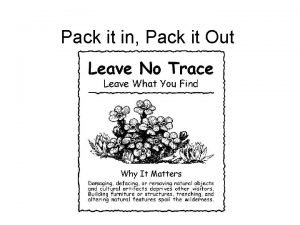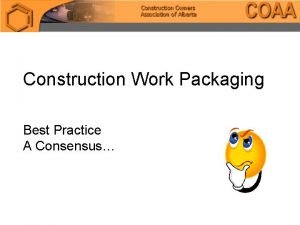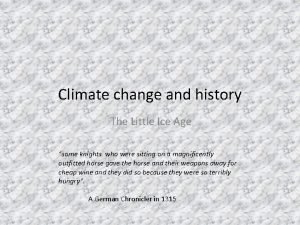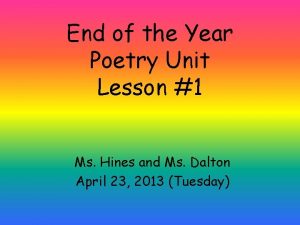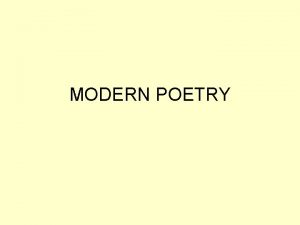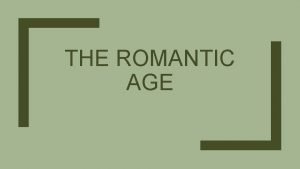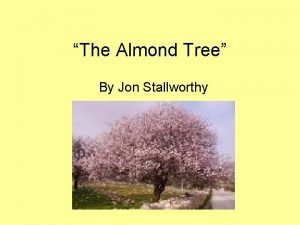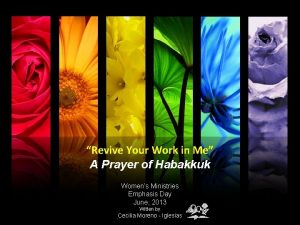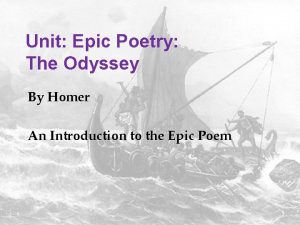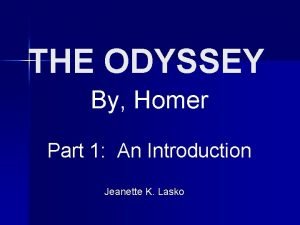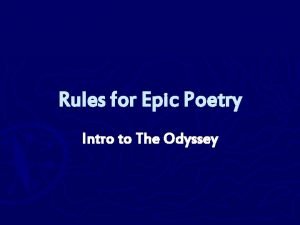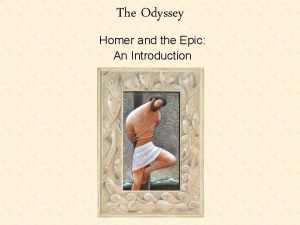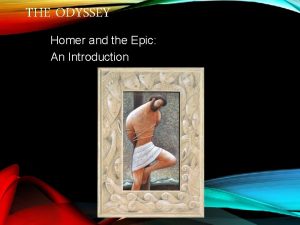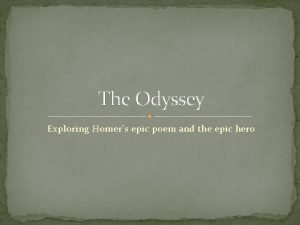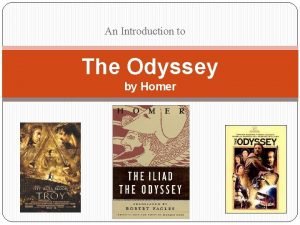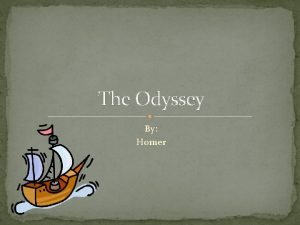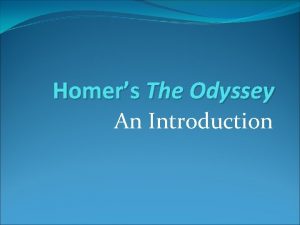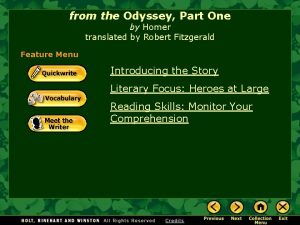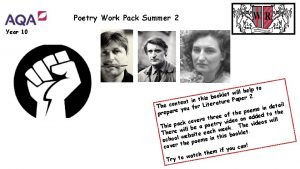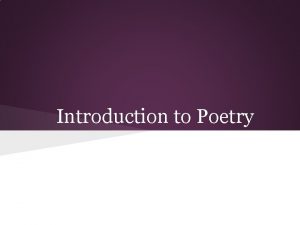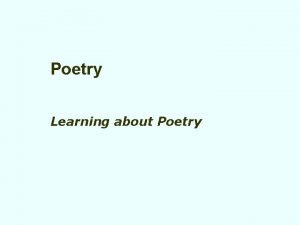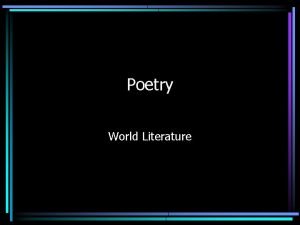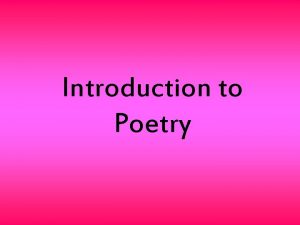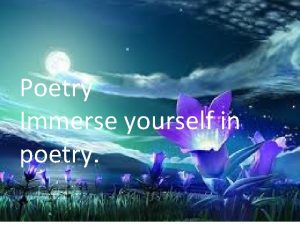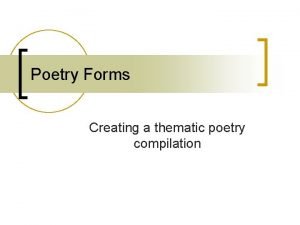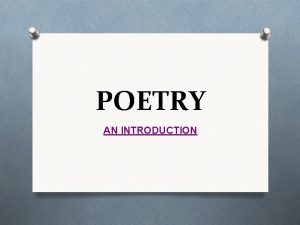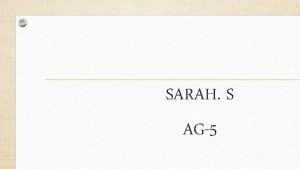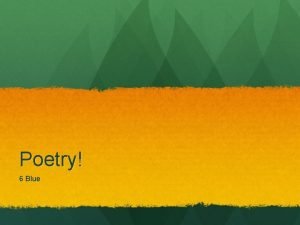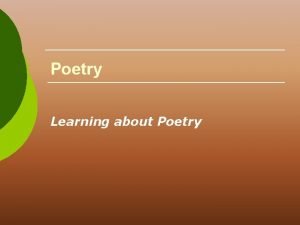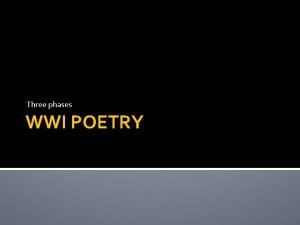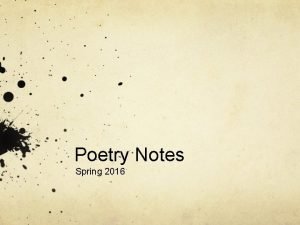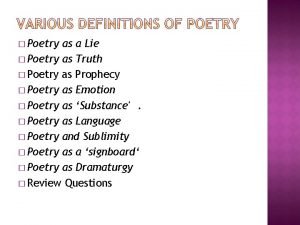Poetry Work Pack Summer 2 Part 2 Year




























- Slides: 28

Poetry Work Pack Summer 2: Part 2 Year 10 to p l e h l l let wi k o o b r 2. is e p h t a P n i ature tent r n e o t c i L e tail. r e o d Th f n i u e yo ems r o a p p e e the r h p t o t f o d e add three n o s deos i r v o e e v e d o i h c v k. T ack try This p ill be a poe el each wee. w nn let There ou. Tube cha n this book Y s i school r the poem ve will co can! u o y m if e h t h watc o t y r T

Contents: Page 3: Glossary of Structural Features. Page 4: A step by step guide for revising poetry. Page Page 5: ‘ War Photographer’ – Context and Writer’s Message. 6 -7: Information on the poem before you read. 8: ‘War Photographer’ –Reading the poem and looking for structural features. 9: ‘War Photographer’ –Additional Information and Questions. 9: ‘War Photographer’ –Theme sheet. 11 -12: ‘War Photographer’- Top Quotes. 13: ‘War Photographer’ –Mini Quiz. Page Page 14: ‘Ozymandias’ – Context and Writer’s Message. 15: ‘Ozymandias’ –Reading the poem and looking for structural features. 16: ‘Ozymandias’- Additional Information and Questions. 17: ‘Ozymandias’ –Theme sheet. 18 -19: ‘Ozymandias’-Top Quotes. 20: ‘Ozymandias’ – Mini Quiz. Page Page 21 -22: ‘The Charge of The Light Brigade’ –Context and Writer’s Message. 23: ‘The Charge of The Light Brigade’ – Reading the poem and looking for structural features. 24: ‘The Charge of The Light Brigade’ –Additional Information and Questions. 25: ‘The Charge of the Light Brigade’ –Theme Sheet. 26 -27: ‘The Charge of The Light Brigade’ –Top Quotes. 28: ‘The Charge of The Light Brigade’ – Mini Quiz.

Glossary of structural features Stanza: Another word for verse. This is what we call the ‘paragraphs’ in a poem. is is a h T : n i a Quatr es. ur lin o f h t i w a stanz h: This t g n e L l a f Equ Stanzas o ) stanzas t s o m r o ( ch is when ea ngth. e l e m a s e y th are exactl ut what o b a k n i h t o You have t bolise. m y s d l u o c this ABAB Rhyme Sch eme: This is when the first lin e rhymes with the third and the second rhymes with the f ourth etc. Free Verse: When a poem doesn’t rhyme or have a regular rhythm. Repetition : W hen a line is re peated mo re than once in a poem. ing point n r u t A : a t l Vo is could be in a poem. Th ange in a dramatic ch emotion. Enjambment : When a sentence runs into the next line without a pause. hen two W : t le p u o C g Rhymin next s e n li ( s e n li e consecutiv me with y h r ) r e h t o h to each other. Media r es: If a poe begins m in media res, it m that it s eans tarts in the midd the actio le of n.

A step by step guide for revising Poetry You will need to complete these steps for each of the three poems in this pack. The video on the school website will also talk through some of the key information in this booklet. Step 1 Read and learn the context and writer’s message for each poem. This is in your pack. Step 2 Read the poem twice. Look up any words or phrases that you don’t know the meaning of. Use your ‘Glossary of Structural Features’ to look for any structural features that you can find in the poem. Step 3 Read the additional information on the poem and answer the questions. Step 4 Complete the Theme Sheet for the poem. Try to think of how the poem links to each of themes on the table. Step 5 Learn the ‘Top Quotes’ and analysis and test yourself. Step 6 Without looking at the rest of the booklet or at your notes, take the ‘Mini Quiz’ on the poem. The answers for this will be released in the feedback booklet.

War photographer by Carol Ann Duffy What happens? • Carol Ann Duffy was our Poet Laureate until May 2019. • Duffy was inspired to write this poem by her friendship with two war photographers, Don Mc. Cullin and Phillip Jones Griffiths. • She was interested in the challenge faced by these people whose job requires them to record terrible, horrific events without being able to directly help their subjects. • She thinks that poets and war photographers share an affinity (have something in common). They both use their art to share truths about how humans treat each other. • In the poem, Duffy also provokes us to consider our own response when we see images of war in newspapers or on TV. She thinks that we have because almost desensitised (numb) to these sorts of images. A war photographer is developing photos that he has taken in war. He remembers the horrors he has seen. He struggles with ‘normal life’ where nobody can understand the horrors of war and nobody seems to care. message Duffy may have written the poem to highlight the damaging psychological impact of conflict that goes unnoticed by many.

Before you read war photographer… The poem begins with a war photographer in his dark room developing photographs. A dark room is a room that photographers use that has no natural light. The only light is a red light so that the films don’t get spoilt by sunlight. All of the photos that a photographer has taken are on rolls of film that look like this (also called spools). The rolls of film are put into a machine that enlarges the images. Next to this is a tray of developing solution with photo paper in it. The images slowly come out onto the photo paper. It is a bit like watching a polaroid picture develop. In the poem, as the photographer develops the photos, he remembers taking them and everything he has seen at war. The poem then tells us that a few of the photos will be chosen to go in the newspaper. Duffy says that the people at home might glance at them before they have a few beers on a Sunday. At the end of the poem, the photographer is on a plane, on his way back to a war zone. He looks out of the window and feels like he doesn’t belong in either world anymore.

Before you read war photographer… There a few tricky words in this poem. Below is a table with their definitions. You can use this table to help you to understand the poem fully. Word/ phrase from the poem Definition Spools A cylinder-shaped object that photograph film winds around. Mass Part of a Catholic funeral service. The coffin is sprinkled with holy water. Belfast, Beirut, Phnom Penh Three capital cities where major conflicts have taken place. Dispel To make a feeling disappear. Editor The editor of a newspaper chooses what will go into the newspaper and sometimes cuts articles down and makes alterations. Sunday’s supplement An extra little magazine or booklet that comes with Sunday’s newspaper. If you pick up a newspaper and something falls out, this will be the supplement. Impassively Not showing emotion. If you look at something impassively, you don’t show any emotion.

War photographer by Carol Ann Duffy In his dark room he is finally alone with spools of suffering set out in ordered rows. The only light is red and softly glows, as though this were a church and he a priest preparing to intone a Mass. Belfast. Beirut. Phnom Penh. All flesh is grass. He has a job to do. Solutions slop in trays beneath his hands, which did not tremble then though seem to now. Rural England. Home again to ordinary pain which simple weather can dispel, to fields which don’t explode beneath the feet of running children in a nightmare heat. Something is happening. A stranger’s features faintly start to twist before his eyes, a half-formed ghost. He remembers the cries of this man’s wife, how he sought approval without words to do what someone must and how the blood stained into foreign dust. 1. 2. Read through the poem. Look up the meaning of any words that you don’t know the meaning of. Use your ‘Glossary of Structural Features (Page 3) to find any structural features in the poem. Structural Features: A hundred agonies in black and white from which his editor will pick out five or six for Sunday’s supplement. The reader’s eyeballs prick with tears between the bath and pre-lunch beers. From the aeroplane he stares impassively at where he earns his living and they do not care.

War photographer Additional Information This poem contains allusion. What is allusion? In a piece of writing, allusion is when the writer mentions something, usually from history, the Bible or literature that people will have heard of. It helps the writer to get their point across. There are lots of different types of allusion. Two types can be found in this poem: Biblical allusion Alluding to art When a writer mentions something from the Bible or uses a quote from the Bible. When a writer mentions a famous work of art or photograph in their writing that people will have heard of. For example, in A Christmas Carol, Dickens refers to Scrooge as a “covetous old sinner”. Dickens is alluding to one of the Ten Commandments from the Bible –’thou shalt not covet’, which suggests that Scrooge is breaking one of God’s commandments and so is going against God. TASK: When you’ve read the information, have a go at answering the questions below: 1. Can you find any religious imagery in this poem? Make a list of any religious words. Why do you think Duffy has included them? 2. The line “all flesh is grass” is Biblical allusion. Can you research where in the Bible this comes from and what it means? Why do you think Duffy has used this line from the Bible in her poem? 3. Below is a famous war photograph. Nick Ut photographed children running from a napalm attack in 1972 during the Vietnam war. For example, “Her smile was more mysterious than the Mona Lisa”. The writer is alluding to the famous painting of The Mona Lisa as she is famous for her mysterious smile Can you find the line in the poem that alludes to this photograph?

War photographer theme sheet A few of the spaces have been completed for you so that you can see what to do. Theme How does this theme link to War Photographer? If you don’t think the poem links to a particular theme, leave it blank. Power The photographer is trying to gain power over his own emotions. Conflict Power of Nature Power of Man Effects of War Reality of War Identity Memory Loss (what is being lost in the poem? ) This shows the negative effects of war. The photographer has been psychologically damaged by war.

War photographer: top quotes Learn the top quotes for this poem and the analysis in the ‘Language Features’ section. Quote Language Features Which themes does it link to? “spools of suffering set out in ordered rows” Juxtaposition between the abstract noun “suffering” and the “ordered rows” could symbolise the control that the photographer is desperately trying to have over his emotions as he makes sense of what he has witnessed. It is also shocking as something as horrific as “suffering” shouldn’t be organised. Sibilance: Creates a sinister tone, emphasising his dark state of mind. • • Effects of war Reality of war Identity Conflicting emotions “All flesh is grass” Biblical allusion: The line alludes to Isiah Chapter 40: 6 and may have been used by Duffy to remind us that all human life is temporary. It reminds the reader of our inevitable deaths and makes us question why we would give our lives up to war. “flesh” has connotations of vulnerability and reminds us again of our mortality. • • • Conflict Identity Power (we are powerless and fragile) “the blood stained into foreign dust” Graphic imagery forces the reader to visualise death in a vivid way, just as the photographer has seen it. We associate the verb “stained” with something damaged and a mark that shouldn’t be there. This could symbolise the fact that his blood shouldn’t have been spilled and emphasise how much is damaged in war. The word “dust” has almost Biblical connotations and makes us think about when God created man. It prompts the reader to thin about how fragile life is. • • • Effects of war Reality of war Identity (we are fragile and powerless) “a hundred agonies in blackand-white from which his editor will pick out five or six for Sunday’s supplement” Juxtaposition of “a hundred agonies” and “Sunday’s supplement” emphasises the fact that people at home don’t fully engage with the horror and unfairness of war. The word “supplement” has connotations of something extra, that is not necessarily needed. This symbolises how little importance we place on the people dying at war. It is something we could ‘take or leave’. The verb “pick” again shows our nonchalant attitude towards war as we can either chose to engage or not to engage, as if soldiers’ lives aren’t important. • • Reality of war Memory (the memories of the people who have died are unimportant to the people at home) Conflict between the reality of war and the little importance that it has to the people at home’. •

Without looking at the page before, complete as much as you can of the ‘Quote’ and ‘Language Feature’ columns. war photographer: top quotes Quote Language Features

War photographer Mini Quiz Complete this quiz without looking at the rest of your booklet. Make sure that you revise all of the information before you attempt it. The answers to this quiz will be released in the feedback booklet. 1. What inspired Duffy to write this poem? (1) 2. Is war presented in a positive or negative way in this poem? Explain your answer. (2) 3. In the poem, what happens to the photographs that the photographer has taken? (2) 4. Write out Duffy's message and fill in the gaps: Duffy may have written the poem to highlight the damaging p____ impact of conflict that goes u____ by many. (2) 5. Complete this quote: “a hundred agonies…” (1) 6. Give an example of allusion in the poem and explain why Duffy might have used it. (2) 7. “the blood stained into foreign dust” Choose two words that you could ‘zoom in’ on from this quote and explain their connotations. (2) 8. Why do you think Duffy chose to use religious imagery when she described the photographer developing his photographs? (1) 9. Write down an example of sibilance in the poem and explain why Duffy might have used it. (2) 10. List three themes that this poem links to and explain the links. (3)

Ozymandias by Percy Bysshe Shelley What happens? • Percy Shelley was born in 1792 and died in 1822. He was alive during the Industrial Revolution. • He was a Romantic poet which means he loved nature and hated power and corruption. • Shelley actually wrote Ozymandias as a competition with his friend. They found out that the statue of Rameses II (another name for Ozymandias) was coming to the British Museum and had a competition to see who could write the best sonnet. • Shelley didn’t like King George III who was the King at the time. King George had many military conflicts, often in pursuit of more land. Like Ozymandias, George wanted power. • The poem could be viewed as a metaphor. Ozymandias represents humans who think they are powerful) and teaches us that nature is more powerful. It could have been a warning to King George. The speaker tells a story about a traveller who has seen a statue of Ozymandias had the statue built to show powerful he was but there is now nothing left. It has been worn away by nature and time. message Shelley perhaps wrote the poem as a critique of powerful rulers and organisations to highlight the fact that ALL power is temporary.

Ozymandias by Percy Bysshe Shelley 1. 2. Read through the poem. Look up the meaning of any words that you don’t know the meaning of. Use your ‘Glossary of Structural Features (Page 3) to find any structural features in the poem. Structural Features: I met a traveller from an antique land Who said: Two vast and trunkless legs of stone Stand in the desert. Near them on the sand, Half sunk, a shatter'd visage lies, whose frown And wrinkled lip and sneer of cold command Tell that its sculptor well those passions read Which yet survive, stamp'd on these lifeless things, The hand that mock'd them and the heart that fed. And on the pedestal these words appear: "My name is Ozymandias, king of kings: Look on my works, ye Mighty, and despair!" Nothing beside remains: round the decay Of that colossal wreck, boundless and bare, The lone and level sands stretch far away.

Ozymandias Additional Information A warning? • • TASK: When you’ve read the information, have a go at answering the questions below: This poem could have been written as a warning for King George III. Like Ozymandias, King George was power-obsessed and Shelley hated corrupt power! The poem could warn him that human power doesn’t last. It is set in a foreign land so King George wouldn’t have been able to accuse Shelley of writing about him! The power of nature Shelley was a Romantic poet which means that he loved nature and believed that it was more powerful than man. In this poem, we can see that even though Ozymandias believed himself to be completely powerful, everything that he had created (his kingdom and his statue) had been destroyed by nature over time. 1. Find a quote from the poem which shows that Ozymandias felt like he had almost ‘God-like’ power. 2. What is the statue of Ozymandias a metaphor for? What does it represent? 3. If this poem was written as a warning to King George to remind him that the power of human beings doesn’t last, which do you think is the most powerful line? 4. List as many quotes as you can find in the poem that show the power of nature.

Ozymandias theme sheet A few of the spaces have been completed for you so that you can see what to do. Theme How does this theme link to Ozymandias? If you don’t think the poem links to a particular theme, leave it blank. Power Nature is more powerful than man. Conflict Power of Nature Power of Man Effects of War Reality of War Identity Memory Loss (what is being lost in the poem? ) Ozymandias has lost his power to nature.

ozymandias: top quotes Learn the top quotes for this poem and the analysis in the ‘Language Features’ section. Quote Language Features Which themes does it link to? “half sunk, a shatter’d visage lies” Metaphor – The statue is a metaphor for the power of man and how it doesn’t last. Adjective- “shattered” has connotations of something completely broken and irreparable. This is what nature can do to man. “Visage” means face but can also mean something that isn’t really there (an image of something). This could symbolise that his power was not really there. It was the image of power with no real substance. • • Power –Man has no power compared to nature Power of nature – nature overpowers man Loss – He has lost his power Memory – His power is now a memory lying covered in sand. “’My name is Ozymandias, King of Kings. Look on my works ye mighty and despair’. Nothing besides remains. ” Juxtaposition of extreme power to ‘nothing. ’ “King of Kings” –Biblical Allusion –God is referred to as this in the Bible. Imperative shows the power that he thought he had before nature took over. • • Power –Man has no power compared to nature Power of nature – nature overpowers man Loss – He has lost his power Memory – His power is now a memory lying covered in sand. “Boundless and bare, the lone and level sands stretch far away” Juxtaposition of “boundless” (infinite) and “level” (calm) shows that nature has ultimate power without even trying. Sibilance sounds like the sound of sand covering him up. It almost makes the sand sound like a predator. Boundless – adjective has connotations of limitless. Nature has limitless power. • • • Power of nature – nature overpowers man Loss – He has lost his power to nature Memory – His power is now a memory lying covered in sand. “colossal wreck” Oxymoron – “colossal” is giant and “wreck” has connotations of something weak and powerless. It symbolises that his power is gone. He has been overpowered by nature. • • Power –Man has no power compared to nature Power of nature – nature overpowers man Loss – He has lost his power Memory – His power is now a memory decaying in sand.

ozymandias: top quotes Quote Language Features Without looking at the page before, complete as much as you can of the ‘Quote’ and ‘Language Feature’ columns.

Ozymandias Mini Quiz Complete this quiz without looking at the rest of your booklet. Make sure that you revise all of the information before you attempt it. The answers to this quiz will be released in the feedback booklet. 1. What gave Shelley the idea for this poem? (1) 2. What was Shelley’s opinion on the Industrial Revolution and corrupt power? (2) 3. Who was the king at the time that this poem was written and what was he like? (2) 4. Write out Shelley’s message and fill in the gaps: Shelley perhaps wrote the poem as a c______ of powerful rulers and organisations to highlight the fact that ALL power is t_____. (2) 5. Complete this quote: “My name is Ozymandias, King…” (1) 6. Give an example of a metaphor in the poem and explain why Shelley might have used it. (2) 7. “Boundless and bare, the lone and level sands stretch far away” Name a language feature in this quote and explain why Shelley might have used it. (2) 8. Why do you think that Shelley chose to use the word “visage”? We know it means face, but what other connotations does it have? (2) 9. “colossal wreck” Explain why these two words juxtapose. Why do you think Shelley used this juxtaposition? What is he trying to say about power? (2) 10. List three themes that this poem links to and explain the links. (3)

The charge of the light brigade by Alfred Lord Tennyson The Crimean war information sheet The Crimean War was a war between Russia and Turkey. It started in 1853 and ended in 1856. During this war, British troops fought for Turkey. This was because Russia was trying to take over Romania and Britain were worried that they would take over India too. If Russia did manage to take over India, it would have destroyed Britain’s trade routes! This means that basically, it was a war about money and business. The Battle of Balaclava was a famous battle during the Crimean War. The soldiers involved in this battle were called The Light Brigade. They were called the Light Brigade because the soldiers and their horses didn’t have much armour. The Light Brigade were never meant to fight. They were really there to observe what was going on and report back. Before you read the context information on the poet, it might be useful to know a little bit more about the Crimean War. Read the information and have a go at the questions below. 1. Who were the two main countries fighting in the Crimean War? 2. Who did Britain fight for and why? 3. What was this war mainly about? 4. Why were The Light Brigade called The Light Brigade? 5. What were The Light Brigade supposed to be doing at war? Three upper class soldiers were in charge of The Light Brigade: Lord Lucan, Lord Raglan and General Cardigan. 6. Name three upper class soldiers in charge of the Light Brigade? The Light Brigade were supposed to be stopping Britain's guns being taken by the Russians but there was a miscommunication in the chain of command. One of the leaders made a mistake and they got sent to charge into a valley lined with Russian cannons. The Light Brigade knew it must have been a mistake because they didn’t have the right armour for this task but they had to do as they were told. Most of them died during the attack. 7. Explain the mistake that the leaders of The Light Brigade made. 8. What was the name of the battle in which most of The Light Brigade died?

The charge of the light brigade by Alfred Lord Tennyson What happens? • Alfred Lord Tennyson was a poet in the Victorian era. • When he was growing up, he saw a lot of poverty. A lot of his poems criticise the upper classes! • He was the Poet Laureate at the time of the Crimean War. This means that he was the royal poet and wrote poems about special occasions. • • • During the Crimean war, a news report came out about that told the horrible truth about what happened to The Light Brigade. Tennyson read this report. It described the mistake that Lord Raglan, General Cardigan and Lord Lucan had made as a “hideous blunder”. These words stuck in his head. Tennyson wanted to write a poem about The Light Brigade when he read the article. Because he was Poet Laureate, he couldn’t write a poem that made Britain sound silly and incompetent (useless). Instead, he wrote a poem that focused on the bravery of the Light Brigade. The Light Brigade are given a command to charge into a valley lined with Russian cannons. They know it must be a mistake but they have to follow the command. They charge and fight as hard as they can but most of them die. The poem honours their bravery. message Tennyson perhaps wrote the poem to celebrate and honour the brave men who fought against impossible odds.

The charge of the light brigade by Alfred Lord Tennyson Half a league, half a league, Half a league onward, All in the valley of Death Rode the six hundred. "Forward, the Light Brigade! Charge for the guns!" he said; Into the valley of Death Rode the six hundred. "Forward, the Light Brigade!" Was there a man dismay'd? Not tho' the soldier knew Some one had blunder'd: Their's not to make reply, Their's not to reason why, Their's but to do and die: Into the valley of Death Rode the six hundred. Cannon to right of them, Cannon to left of them, Cannon in front of them Volley'd and thunder'd; Storm'd at with shot and shell, Boldly they rode and well, Into the jaws of Death, Into the mouth of Hell Rode the six hundred. 1. 2. Read through the poem. Look up the meaning of any words that you don’t know the meaning of. Use your ‘Glossary of Structural Features (Page 3) to find any structural features in the poem. Structural Features: Flash'd all their sabres bare, Flash'd as they turn'd in air, Sabring the gunners there, Charging an army, while All the world wonder'd: Plunged in the battery-smoke Right thro' the line they broke; Cossack and Russian Reel'd from the sabre-stroke Shatter'd and sunder'd. Then they rode back, but not, Not the six hundred. Cannon to right of them, Cannon to left of them, Cannon behind them Volley'd and thunder'd; Storm'd at with shot and shell, While horse and hero fell, They that had fought so well Came thro' the jaws of Death Back from the mouth of Hell, All that was left of them, Left of six hundred. O the wild charge they made! All the world wonder'd. Honour the charge they made! Honour the Light Brigade, Noble six hundred!

The charge of the light brigade Information Additional TASK: When you’ve read the information, have a go at answering the questions below: 1. A ballad usually has a refrain (a repeated section). What is the refrain in this poem? Which bit keeps getting repeated. ck from lls a story. They stem ba te at th em po a is d lla ba A at gets lly have a refrain (a bit th ua us ey Th. es tim l va ie Med repeated). ory is passed down from st e th at th is d lla ba a The idea of and never forgotten. n tio ra ne ge to n tio ra ne ge 2. Look at the information on ballads. Why do you think Tennyson chose to write this poem in the form of a ballad? 3. Look at the extract from Psalm 23 and the brief explanation of what it means. Why do you think Tennyson chose this quote from the Bible to allude to? How do you think it would make the people at home, reading the poem, feel? BIBLICAL ALLUSION **CHALLENGE** Psalm 23 was written by David. He was little boy in the Bible who fought a giant and won. The line “valley of Death” alludes to Psalm 23 in the Bible. Can you find any links between the story of David and Goliath and this poem? Tennyson wrote this poem in the form of a BALLAD. The psalm says “Yea(even), though I walk through the valley of the shadow of death, I will fear no evil; for thou art with me; Thy rod and thy staff, they comfort me. ” It is basically saying that in the really dark times, God is with you.

The charge of the light brigade A few of the spaces have been completed for you so that you can see what to do. theme sheet Theme How does this theme link to The Charge of The Light Brigade? If you don’t think the poem links to a particular theme, leave it blank. Power The soldiers are powerless to the commands of their leaders. The soldiers are powerful and brave when they ride into the valley lined with Russian cannons. Conflict Power of Nature Power of Man Effects of War Reality of War Identity Memory Loss (what is being lost in the poem? ) The poem almost ignores the mistake made by the leaders and focuses on the reality of how brave the Light Brigade were.

The charge of the light brigade: top quotes Learn the top quotes for this poem and the analysis in the ‘Language Features’ section. Quote Language Features Which themes does it link to? “All in the valley of Death Rode the six hundred. ” Metaphor: “valley of death” may have been used by Tennyson to represent the certainty that many of the men will die. Their chance of survival is almost impossible. Biblical allusion: Tennyson may have alluded to Psalm 23 to symbolise the fact that God is with The Light Brigade. It makes it sound like God is supporting them because of their bravery. • • • Effects of war Reality of war Power of man “Theirs not to make reply, Theirs not to reason why, Theirs but to do and die. ” The repetition of the word ‘Theirs’ sounds almost robotic. It may have been used to symbolise that the men were indoctrinated (brainwashed) into following commands. “Theirs not” is negation. It may have been used to emphasise the lack of ‘voice’ that the soldier have. They have to obey without question. • • • Conflict Reality of War Power (soldiers are powerless – they don’t have a voice). “When can their glory fade? O the wild charge they made!” The rhetorical question forces the reader to agree that the glory of the Light Brigade will never fade but live on in history. The word “glory” has religious connotations. We usually associate it with God. Perhaps Tennyson is suggesting that they have shown God like bravery or that God is happy with them. The adjective “wild” makes them sound powerful and uncontrollable like animals. It demands the reader’s respect! • • Conflict Identity (they will live on in history) Memory (they will be remembered) Power (They sound powerful here). The imperatives demand that the reader gives respect to The Light Brigade. The repetition of the word “honour” creates an almost robotic tone. It is as if Tennyson is trying to indoctrinate (brainwash) the reader into giving respect to The Light Brigade. We usually associate the word “Noble” with royalty. This word may have been chosen by Tennyson to manipulate the reader into looking up to the soldiers as we look up to royalty • “Honour the charge they made! Honour the Light Brigade, Noble six hundred!” • • Identity (they will live on in history) Memory (they will be remembered) Power (They sound powerful here).

The charge of the light brigade: top quotes Quote Language Features Without looking at the page before, complete as much as you can of the ‘Quote’ and ‘Language Feature’ columns.

The charge of the light brigade Mini Quiz Complete this quiz without looking at the rest of your booklet. Make sure that you revise all of the information before you attempt it. The answers to this quiz will be released in the feedback booklet. 1. What inspired Tennyson to write this poem? What had he read? (2) 6. Give an example of a Biblical allusion in the poem end explain why Tennyson may have used it. (2) 2. Tennyson was Poet Laureate when he wrote this poem. What sort of things does a Poet Laureate do? (1) 7. “When can their glory fade? O the wild charge they made!” Choose two words from this quote to ‘zoom in’ on and explain their connotations. (2) 3. Why didn’t Tennyson write a poem all about the horrible mistake that the leaders had made? (1) 4. Write out Tennyson’s message and fill in the gaps: Tennyson perhaps wrote the poem to c_______ and honour the brave men who fought against i____ odds. (2) 5. Complete this quote: “All in the…” (1) 8. Can you find a line in this poem that refers to the mistake that was made by General Cardigan, Lord Lucan and Lord Raglan? (1) 9. “Honour the charge they made! Honour the Light Brigade, Noble six hundred!” Name a language feature in this quote and explain why it might have been used by Tennyson. (2) 10. List three themes that this poem links to and explain the links. (3)
 Pack in, pack out
Pack in, pack out 30 pack year smoking history means
30 pack year smoking history means Pack years calculation
Pack years calculation Pack year calculation
Pack year calculation Iwp meaning in construction
Iwp meaning in construction Adj ex
Adj ex Henrik svensmark
Henrik svensmark Poem on summer season
Poem on summer season Poem for leavers assembly
Poem for leavers assembly End of the year poetry
End of the year poetry Metaphysical poetry
Metaphysical poetry Traditional poetry vs modern poetry
Traditional poetry vs modern poetry Narrative poems by shel silverstein
Narrative poems by shel silverstein Augustan and romantic literature
Augustan and romantic literature The almond tree poem
The almond tree poem Year 7 food technology worksheets
Year 7 food technology worksheets Habakkuk prayer for revival
Habakkuk prayer for revival The odyssey and epic poetry: an introduction, part 1
The odyssey and epic poetry: an introduction, part 1 The odyssey and epic poetry an introduction part 1
The odyssey and epic poetry an introduction part 1 Epic poem rules
Epic poem rules The odyssey and epic poetry an introduction part 1
The odyssey and epic poetry an introduction part 1 The odyssey
The odyssey Homers epic poem
Homers epic poem Introducing the odyssey
Introducing the odyssey The odyssey and epic poetry an introduction part 1
The odyssey and epic poetry an introduction part 1 The odyssey and epic poetry an introduction part 1
The odyssey and epic poetry an introduction part 1 The odyssey and epic poetry an introduction part 1
The odyssey and epic poetry an introduction part 1 Part part whole addition
Part part whole addition Unit ratio definition
Unit ratio definition
